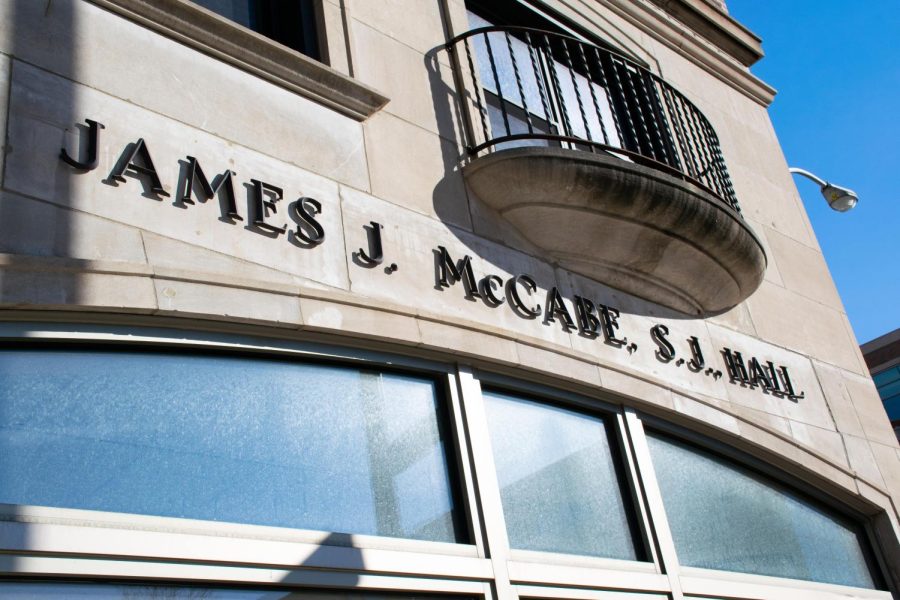Marquette and Princeton University both serve as institutions for higher education. Despite being hundreds of miles away, the two share a unique partner: Salas O’Brien.
The engineering firm is working alongside Princeton to decarbonize its campus with a desired neutrality (net zero carbon) date of 2046. The aim of decarbonization is to reduce a system’s carbon footprint, accomplished by balancing its amount of carbon emissions as close as possible to the amount used.
This past September, the firm released work with two professors at Marquette to investigate a similar opportunity. David Nowacek, an assistant professor of social and cultural sciences, and Timothy Tharp, an associate professor of physics, served as the primary investigators of the study.
The proposal focuses on two points of potential decarbonization at Marquette, being that it is both feasible and cost-effective to make the change. Both claims are supplemented by science and data within the report.
“The physical science of it is so compelling,” Nowacek said. “This kind of transition is common sense.”
The alteration would also align with Marquette’s Jesuit mission and commitment to the greater good, Ally Olsen, a senior in the College of Arts and Sciences, said. Olsen is an environmental science major with an interest in sustainability.
“It’s good that we’re taking these principles of caring for our environment and transferring them to these other projects— and really integrating our Jesuit values along with caring for the climate and the planet and making these sustainable changes,” Olsen said.
The study on potential decarbonization at Marquette focuses on the source of thermal energy, as the proposal would transition the university away from using steam generated by fossil fuels. In its place, a hot water network would be used that is powered by the Milwaukee sewer system— a renewable, low-energy source
The hot water network would be built parallel to the existing chilled water network. Heat pumps would then be purchased to supply the networks while being paired with the sewer system as a source of thermal energy.
The study revealed the feasibility of that solution in the discovery of a sewer main along Clybourn Street, which marks the southern end of the Marquette campus. The main runs between 10,000 and 14,000 gallons of water per minute, which generates enough heat to be used in the proposed system.
“It was great to learn that unique fact about Marquette, because using the sewers as the source rather than drilling a bunch of boreholes around campus comes in at about a third of the cost,” Nowacek said.
The financial component of the proposal dictates that the university has the opportunity to save millions of dollars, according to Nowacek. The monetary projection, adjusted for the discounting of future benefits, anticipates $67 million in savings for Marquette within the first three decades of the system’s use.
“[There are] various initiatives on campus to try to cut costs at the university,” Tharp said. “What this study tells me is that we can’t afford business as usual. We can’t afford to not do something like this.”
If the proposal is approved by university administration, there are two different avenues that could be pursued in putting it into action.
The first option (and direction from which the projections stem from) would be to install all of the new heat exchangers and the distribution network at once over the stretch of multiple years, which would allow the university to benefit from the Inflation Reduction Act. Under this act, direct payments can be made to non-profit institutions for such initiatives to cover up to 40% of the cost.
Alternatively, a slower integration process could be selected, which would ease the new system in rather than doing a complete overhaul. However, this approach wouldn’t provide the same financial benefit. If new infrastructure is set in place without being linked to the renewable source of energy, the tax rebates would not be maximized.
“You don’t get quite the savings as quickly or as high of savings if you just do it step-by-step,” Nowacek said.
In the process of investigating the feasibility at Marquette, WeEnergies was involved in looking at the project on a larger scale.
“We really engaged with our utility company so that we could set up not only a system that is good for Marquette, but one that other campuses could copy,” Tharp said. “[The utility companies] can go out and set up new infrastructure and set it up for the needs of the future instead of just copying what’s been done in the past.”
One of the study’s primary goals was to illustrate how the sustainable model could be integrated beyond the landscape of Marquette.
“Something we really wanted to do with this is set out to be an example for the rest of the community,” Tharp said.
Following the release of the proposal in September, the researching team awaits an approval decision from university administration.
“This could set up an example and pave the way for Wisconsin to become an important player in determining what our energy future looks like,” Tharp said.
This story was written by Lance Schulteis. He can be reached at lance.schulteis@marquette.edu.












